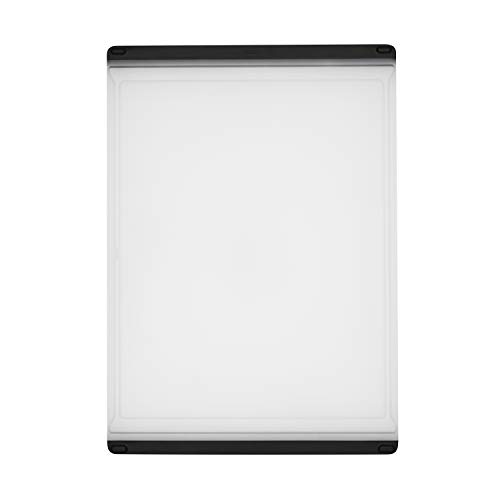Are all Cutting Boards the Same?
In the realm of culinary craftsmanship, the importance of selecting the right tools cannot be overstated. Among these tools, cutting boards hold a significant place in every kitchen. But the question arises: Are all cutting boards the same?
The answer may surprise you, as the world of cutting boards is far more diverse and intricate than it may seem at first glance. In this article, we will delve into the fascinating world of cutting boards, exploring their materials, benefits, drawbacks, and how choosing the right one can make a substantial difference in your kitchen experience.
Are all Cutting Boards the Same?
No, not all cutting boards are the same. Cutting boards come in various materials, sizes, and designs, each with its own set of advantages and disadvantages. Here are some key differences to consider:
- Material: Cutting boards can be made from various materials, including wood, plastic, bamboo, and composite materials. Each material has distinct properties:
- Wood: Wooden cutting boards are aesthetically pleasing and gentler on knife edges. They are less likely to dull knives but require more maintenance, as they can absorb moisture and odors.
- Plastic: Plastic cutting boards are easy to clean and maintain. They are often dishwasher-safe, less porous, and resistant to moisture and odors. However, they may develop knife marks more quickly than wood.
- Bamboo: Bamboo cutting boards are eco-friendly and durable. They are less prone to knife marks but may not be as gentle on knife edges as wood.
- Composite: Composite cutting boards are a mix of materials, offering some of the benefits of both wood and plastic. They are durable and low-maintenance.
- Size: Cutting boards come in various sizes, from small individual boards for quick chopping to large boards for preparing multiple ingredients. The right size depends on your cooking needs and available kitchen space.
- Thickness: The thickness of a cutting board can affect its durability and stability. Thicker boards are generally more durable but can be heavier and bulkier to store.
- Design: Cutting boards can have different designs, including rectangular, round, or custom shapes. Some may have grooves to catch juices or non-slip surfaces for stability.
- Intended Use: Consider the types of foods you’ll be cutting. For example, using separate cutting boards for raw meats and vegetables can help prevent cross-contamination.
- Maintenance: Different materials require varying levels of care. Wooden boards need regular oiling to prevent drying out and cracking, while plastic boards can be easily sanitized in a dishwasher.
- Longevity: The durability of a cutting board depends on the material and how well it’s maintained. Wooden boards can last for many years with proper care, while plastic boards may need replacing sooner.
In summary, cutting boards are not all the same. The choice of a cutting board should align with your preferences, cooking habits, and maintenance routines. Consider the material, size, and design that best suits your needs to ensure safe and efficient food preparation in your kitchen.
The Variety of Cutting Board Materials
Wooden Cutting Boards
Wooden cutting boards have long been the standard in kitchens around the world. They are not only visually appealing but also functional and durable. Woods like maple, cherry, and walnut are popular choices due to their sturdiness and natural resistance to knife marks. Additionally, wooden cutting boards tend to be gentler on knife blades, helping them maintain their sharpness.
Plastic Cutting Boards
Plastic cutting boards are another common choice for home cooks. They are affordable, easy to clean, and come in various colors for designated use (e.g., red for raw meat, green for vegetables). However, they can be less forgiving on knives, causing them to dull faster. It’s crucial to replace plastic boards when they show signs of wear and deep knife grooves, as they can harbor bacteria more easily.
Bamboo Cutting Boards
Bamboo cutting boards have gained popularity in recent years due to their eco-friendly nature. Bamboo is a sustainable and fast-growing material, making it an excellent choice for environmentally conscious consumers. Bamboo cutting boards are also gentle on knives and provide a durable cutting surface.
Glass Cutting Boards
Glass cutting boards are known for their sleek and modern appearance. They are easy to clean and are impervious to stains and odors. However, they are incredibly hard and unforgiving on knife blades, causing them to dull quickly. Glass cutting boards are often considered more suitable for serving and presentation rather than heavy chopping.
Composite Cutting Boards
Composite cutting boards, made from a mix of materials like wood fibers and resin, offer the best of both worlds. They combine the durability of plastic with the knife-friendliness of wood. These boards are designed to resist stains, odors, and knife marks, making them a versatile choice for various kitchen tasks.
Considerations for Choosing the Right Cutting Board
Hygiene and Safety
When it comes to food safety, cutting boards play a crucial role. Wooden cutting boards have natural antimicrobial properties that can inhibit the growth of harmful bacteria. However, it’s essential to maintain them properly, including regular oiling and cleaning. Plastic and composite boards are dishwasher-safe and easy to sanitize, making them a good choice for those who prioritize convenience.
Knife Maintenance
For those who value the longevity of their knives, the choice of cutting board is paramount. Wooden and bamboo boards are less likely to dull knives, while plastic and glass boards can be harsh on blades. Regular honing and sharpening may be necessary when using the latter.
Environmental Impact
If sustainability is a priority, bamboo and composite cutting boards are excellent choices. Bamboo is a renewable resource, and composite boards often incorporate recycled materials, reducing their environmental footprint.
Durability and Maintenance
Consider how much maintenance you’re willing to invest in your cutting board. Wooden boards require regular oiling to prevent cracking, while plastic and composite boards are low-maintenance. Glass boards are durable but may show knife marks over time.
Conclusion
In the world of culinary arts, the choice of a cutting board is far from a trivial matter. While all cutting boards serve the same fundamental purpose, their materials, benefits, and drawbacks can significantly impact your cooking experience. Whether you prioritize knife maintenance, food safety, sustainability, or ease of maintenance, there is a cutting board tailored to your needs.
So, are all cutting boards the same? The answer is a resounding no. Your choice of cutting board should align with your specific requirements and preferences in the kitchen. By understanding the nuances of different cutting board materials, you can elevate your culinary endeavors and enjoy a more enjoyable cooking experience.


